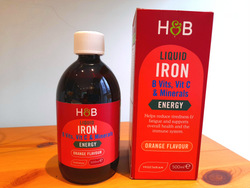 If an iron supplement has been recommended to you by a professional, then here are some useful guidelines for taking it. If you are unaware of these considerations, you won’t get the best value for money from your supplement and it may take longer than necessary for your iron levels to get back up to normal.
If an iron supplement has been recommended to you by a professional, then here are some useful guidelines for taking it. If you are unaware of these considerations, you won’t get the best value for money from your supplement and it may take longer than necessary for your iron levels to get back up to normal.
A good deal of research has been conducted in this area, much of it on individual dietary components in order to minimise the variables. When a typical complete diet is considered, the results may be a little different, but it probably won’t invalidate the broad recommendations that follow from what I have written. This is a surprisingly complex subject and there is more waiting to be discovered, but treat this as a simplified summary.
Iron is unusual in that 90% of our daily needs are met from within, from the natural breakdown of old red blood cells in fact. Some iron is lost by for example menstrual bleeding and the shedding of skin cells. In adults, the sum of these losses must be compensated for by diet. Certain diets and medical conditions will mean that supplementation is beneficial at intervals.
Haem and Non-Haem Iron
Dietary iron comes in two forms:
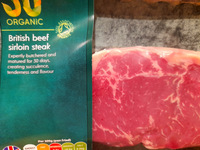 Haem iron is found in meat, fish and poultry. It is the most easily absorbed form of dietary iron.
Haem iron is found in meat, fish and poultry. It is the most easily absorbed form of dietary iron.
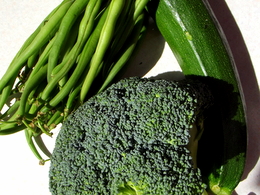 Non-haem iron is found in plant foods but also occurs in animal tissue. It is significantly less well absorbed than haem iron [1], so vegetarians and vegans have to be more vigilant when it comes to ensuring sufficient iron in their diets. Nevertheless, these foods are important components of a well-balanced diet.
Non-haem iron is found in plant foods but also occurs in animal tissue. It is significantly less well absorbed than haem iron [1], so vegetarians and vegans have to be more vigilant when it comes to ensuring sufficient iron in their diets. Nevertheless, these foods are important components of a well-balanced diet.
Inhibitors of Iron Uptake
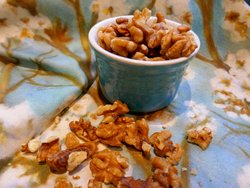 Some components in our diets can inhibit iron uptake. These are phytates, polyphenols, calcium and animal protein from milk and eggs. Taking these in order, phytates are present in plant-based diets in foods such as whole wheat, oats, rice, black beans, pinto beans, kidney beans, soybeans, peanuts, lentils, walnuts, pine nuts, almonds, sesame seeds, potatoes, beetroot, turnips and carrots. Once again, these foods are important elements of a well-balanced diet.
Some components in our diets can inhibit iron uptake. These are phytates, polyphenols, calcium and animal protein from milk and eggs. Taking these in order, phytates are present in plant-based diets in foods such as whole wheat, oats, rice, black beans, pinto beans, kidney beans, soybeans, peanuts, lentils, walnuts, pine nuts, almonds, sesame seeds, potatoes, beetroot, turnips and carrots. Once again, these foods are important elements of a well-balanced diet.
Phytates form complexes with iron, zinc and calcium rendering those minerals hard for the body to absorb. In practice, this would suggest it’s best not to take your iron supplement with your oat porridge in the morning, because you have the presence of phytates and milk.
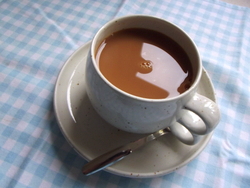 Next on the list of inhibitors come polyphenols. These are found in some fruit, vegetables, red wine and teas including herbal teas. They offer many benefits including anti-inflammatory and anti-oxidant properties and positively should be part of your diet. They do however, inhibit iron absorption. This means don’t have black tea, coffee, cocoa, or herb teas like chamomile or peppermint (the common ones I found referenced in the research literature) at the same time as your iron supplement. Black tea appears the most inhibiting and red wine the least. The addition of milk to tea and coffee appears to make no significant difference.
Next on the list of inhibitors come polyphenols. These are found in some fruit, vegetables, red wine and teas including herbal teas. They offer many benefits including anti-inflammatory and anti-oxidant properties and positively should be part of your diet. They do however, inhibit iron absorption. This means don’t have black tea, coffee, cocoa, or herb teas like chamomile or peppermint (the common ones I found referenced in the research literature) at the same time as your iron supplement. Black tea appears the most inhibiting and red wine the least. The addition of milk to tea and coffee appears to make no significant difference.
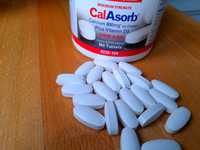 Another common inhibitor is calcium. This seems to have a limited effect on haem and non-haem iron absorption, being taken up preferentially at the expense of the iron. In the diet as a whole, it is probably less of an issue, but it would seem sensible if you have also been recommended to take a calcium supplement for osteoporosis say, not to take it at the same time as your supplemental iron.
Another common inhibitor is calcium. This seems to have a limited effect on haem and non-haem iron absorption, being taken up preferentially at the expense of the iron. In the diet as a whole, it is probably less of an issue, but it would seem sensible if you have also been recommended to take a calcium supplement for osteoporosis say, not to take it at the same time as your supplemental iron.
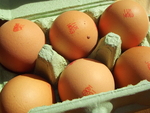 Finally, animal proteins such as milk and egg proteins, are also inhibitors of iron uptake, as is soy protein. It would follow that avoiding milk, eggs or sports protein supplements with your iron, would make sense.
Finally, animal proteins such as milk and egg proteins, are also inhibitors of iron uptake, as is soy protein. It would follow that avoiding milk, eggs or sports protein supplements with your iron, would make sense.
Enhancers of Iron Uptake
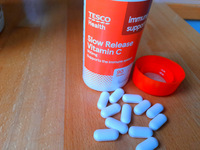 Next we come to the two main enhancers of iron uptake: vitamin C and animal tissue. Vitamin C is able to reduce Fe3+ to Fe2+ (see [1] below). Let vitamin C be a trump card for you. It can counteract the unhelpful effects of all the inhibitors mentioned above and is a good supplement to take alongside your iron.
Next we come to the two main enhancers of iron uptake: vitamin C and animal tissue. Vitamin C is able to reduce Fe3+ to Fe2+ (see [1] below). Let vitamin C be a trump card for you. It can counteract the unhelpful effects of all the inhibitors mentioned above and is a good supplement to take alongside your iron.
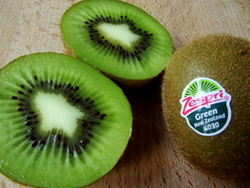 In vegetarian and vegan diets, fruit and vegetables rich in vitamin C can be used at every meal to enhance uptake of the non-haem iron in those meals. Kiwi fruit for example would be a good dessert. Connected with that though, be aware that cooking and storage can degrade vitamin C in food. This applies to freezing, and especially to the boiling of vegetables where vitamins C and B dissolve in the water which gets discarded.
In vegetarian and vegan diets, fruit and vegetables rich in vitamin C can be used at every meal to enhance uptake of the non-haem iron in those meals. Kiwi fruit for example would be a good dessert. Connected with that though, be aware that cooking and storage can degrade vitamin C in food. This applies to freezing, and especially to the boiling of vegetables where vitamins C and B dissolve in the water which gets discarded.
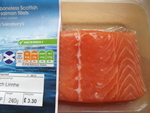 Distinct from the animal-derived proteins mentioned above as inhibitors, animal tissue on the other hand is an enhancer of iron uptake. This includes meat, fish and poultry.
Distinct from the animal-derived proteins mentioned above as inhibitors, animal tissue on the other hand is an enhancer of iron uptake. This includes meat, fish and poultry.
Summary
All you really need do is think about the content of your meals from the above perspectives, and you’ll probably be able to settle on a regular time of day for your supplement. For example, if your breakfast is a lovely healthy bowl of muesli (phytates) with berries (polyphenols) and milk (animal protein), then you should probably choose a time later in the day to take your iron.
Resist the temptation to get too tied in knots over these suggestions, or to avoid the inhibitors because in themselves, they are healthy foods offering a range of benefits. The most important thing is that you take your iron supplement at some point in the day, and if you can heed these tips, then so much the better. There is an abundance of research available and I have listed below some starting points if you are interested.
A relatively new school of thought is also that iron absorption may be better when supplements are taken on alternate rather than on consecutive days. The research [2,3] has often used quite high doses of iron and it may not be applicable to all patient groups. It may be helpful for patients who get unwanted digestive side-effects.
[1] If you are curious about the difference in our ability to absorb these two forms, here is an explanation for those interested in chemistry. Non-haem iron is in the ferric or Fe3+ form. The stomach is a highly acidic environment, but the duodenum far less so, meaning that ferric iron would precipitate out when it arrived there. To be successfully absorbed in the small intestine, ferric iron must be soluble and form bonds with helpful organic molecules in the diet, though it can also end up bonding with molecules which inhibit its absorption. Haem iron by contrast is in the ferrous or Fe2+ form and encounters none of these hurdles so is more readily carried into the intestinal absorptive cells.
Soy protein, phytate, and iron-absorption in humans. American Journal of Clinical Nutrition, 1992.
Calcium supplementation—effect on iron-absorption. American Journal of Clinical Nutrition, 1991.
